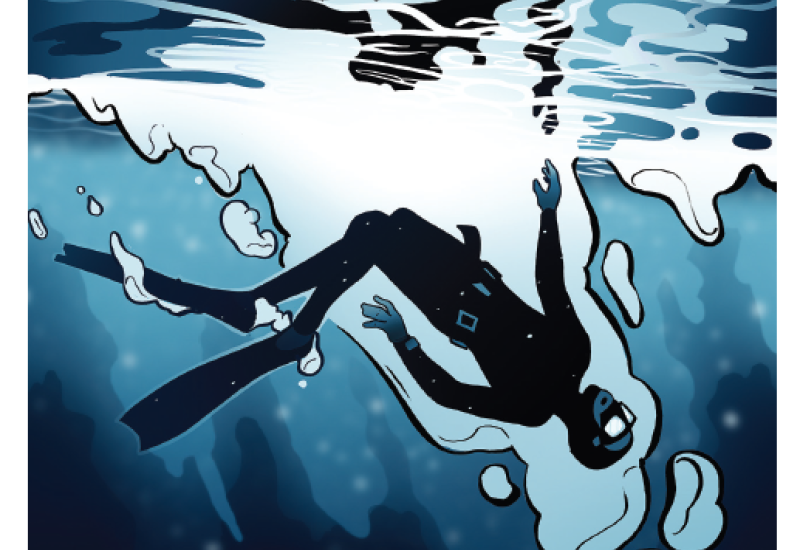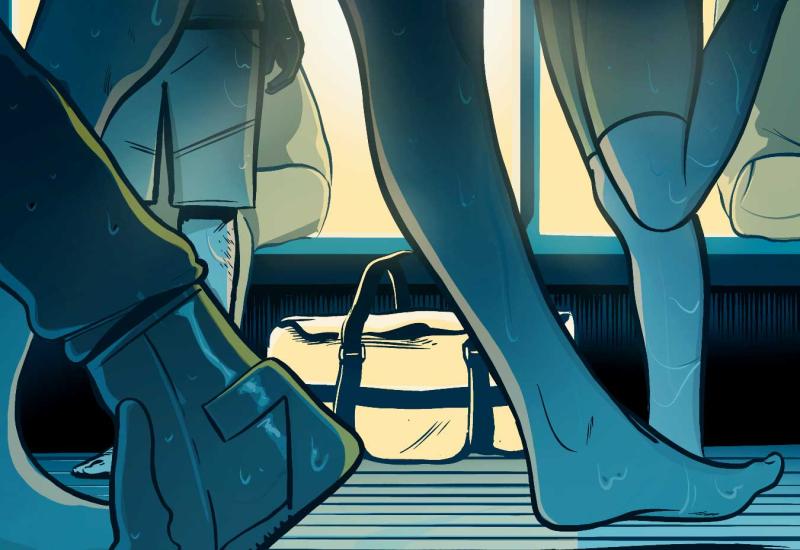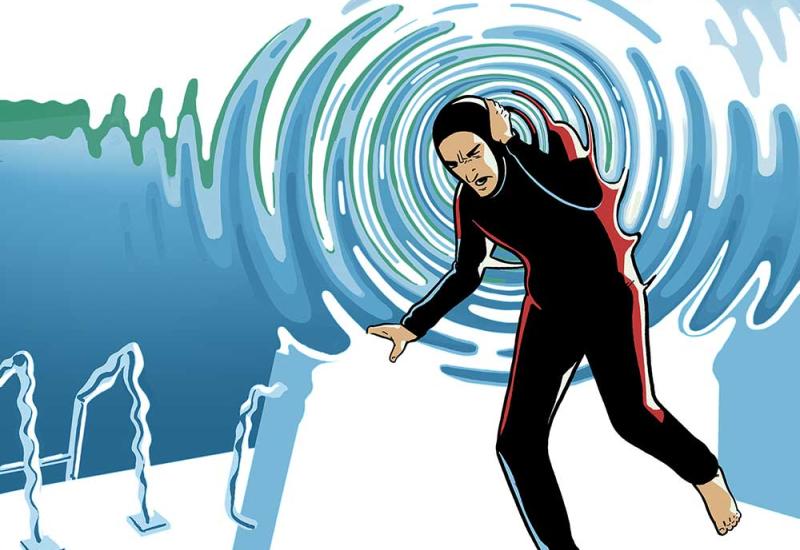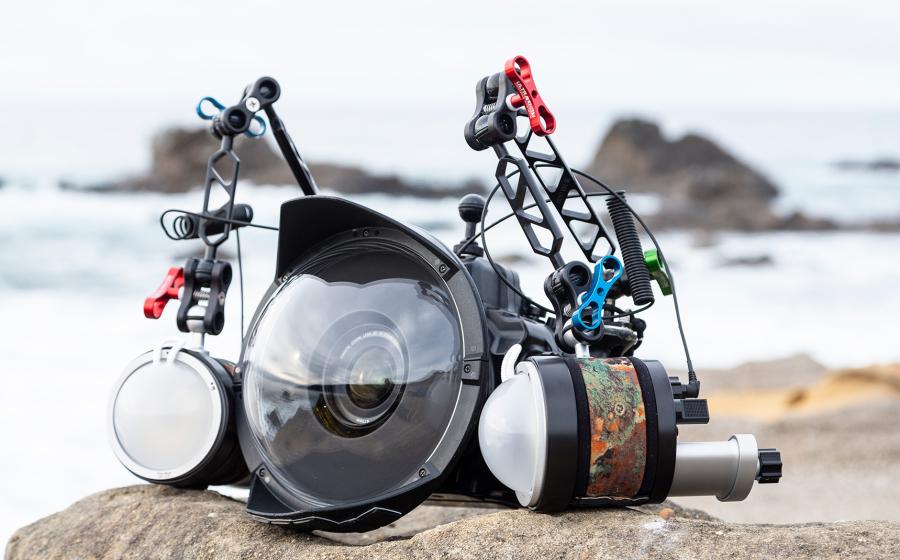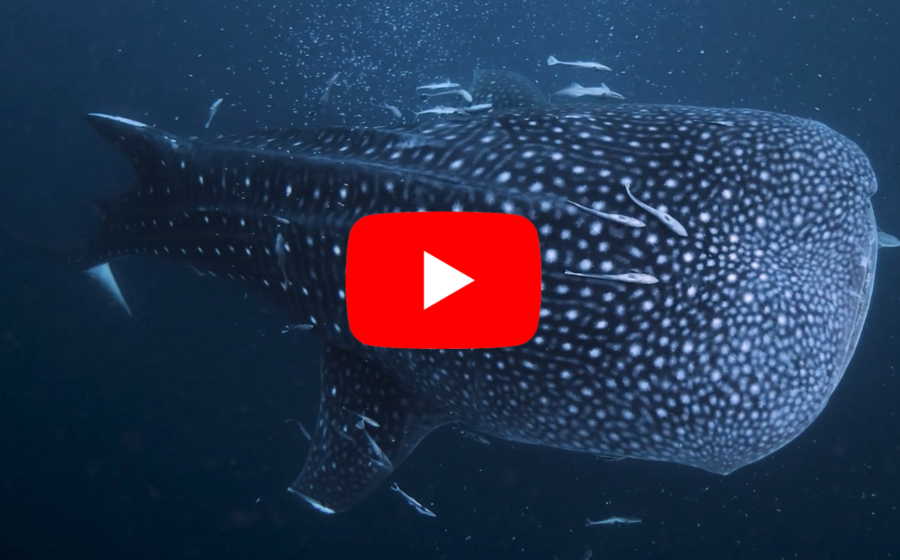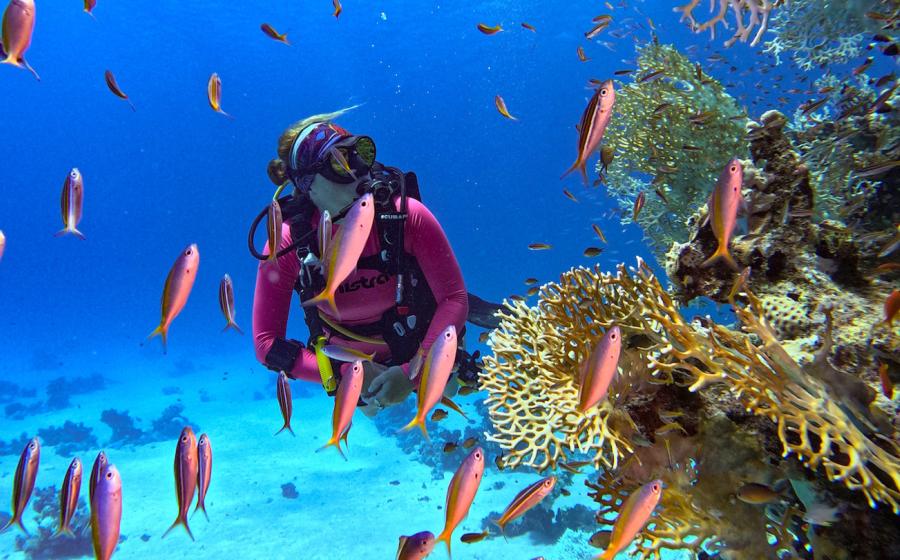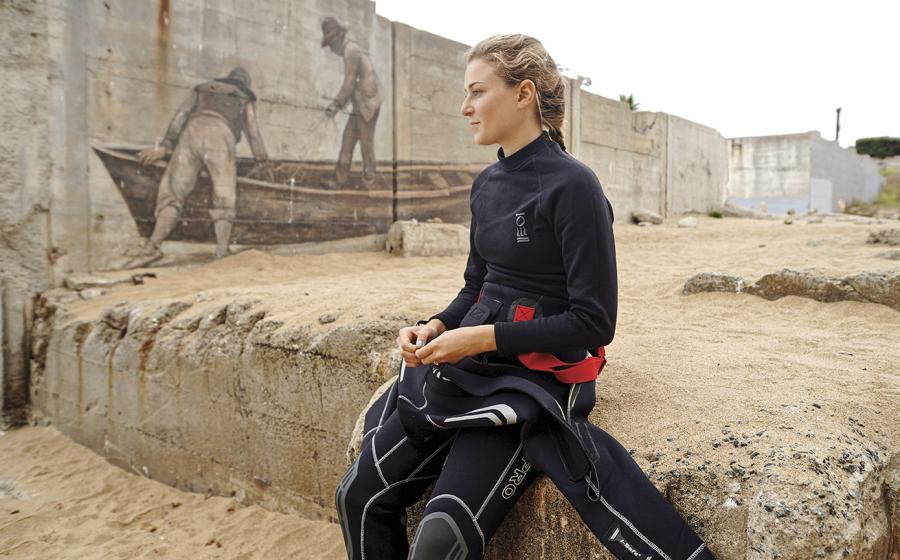The Rapid Descent
December 2004
Jose clung to the nearly vertical wall. The corals were cutting his hands and arms, but he didn't dare let go. Holding on in a death grip with one hand, he reached for his gauges. The numbers weren't good. Despite his attempts to climb up the wall, he was still at 160 feet, and his computer was now flashing dire warnings of a growing decompression obligation. Worse, his pressure gauge showed he had less than 500 psi of air remaining. Jose gulped in deep breaths and tried to remember his training through the panic and narcosis. His BC wouldn't inflate, but he could still drop his weights. Fumbling for the release handles with his free hand, he sensed enveloping darkness and it became harder and harder to breathe.
The Diver
Jose was in his late twenties and in excellent health. After a period of inactivity, Jose completed advanced open-water certification, making more than 75 dives near his Pacific coast home. Jose then traveled to the tropics to try warm-water diving.
The Dive
It was a beautiful day with seas like glass as Jose boarded the dive boat headed to a deep wall site. The popular reef began at 80 feet and dropped to depths of more than 1,000. The plan called for the group of six advanced divers to enter the water and congregate on the boat's anchor line just below the surface until the divemaster could lead them on descent. After anchoring over the ledge, the boat captain gave a second detailed briefing.
Jose's buddy entered the water and moved immediately toward the bow anchor line. Once there, he looked around for Jose, who had stepped into the water right behind him. Despite the incredibly clear water, the diver could see no sign of Jose. When the last divers entered the water, the buddy swam back to the stern to inform the crew that Jose was missing.
The divemaster, Dan, quickly entered the water and confirmed one diver was indeed missing. Instructing the divers to return to the surface, Dan made a quick broad sweep around the anchor. Finding no sign of Jose, he surfaced and notified the captain. The captain scanned the area around the boat and pointed to a stream of bubbles coming up a few yards from the stern.
The Accident
Following the bubble trail, Dan became alarmed as he passed the ledge of the wall at 80 feet. His concern grew as he passed through the last of the bubbles at 130 feet before he saw Jose slightly up current and still 30 feet below. Dan torpedoed toward Jose, grabbing him and attempting to inflate his BC, but to no effect. Jose was nonresponsive, and though his regulator was still firmly gripped in his mouth, he was not breathing. Reaching down to dump the weights from Jose's BC, Dan noticed that one weight pocket was already partially removed.
Dan realized it would be unwise to try to remove the nonfunctioning regulator and replace it with his own alternate air source. He opted instead to take Jose as rapidly as possible to the surface where resuscitation could begin in earnest. Using his own BC for lift, Dan rocketed to the surface, holding Jose's head back to keep an open airway. As they surfaced, the captain noted that Jose had been in the water approximately six or seven minutes. The crew pulled Jose aboard the boat and immediately began CPR and oxygen administration while the captain headed toward shore. Jose was transported to a medical clinic where he was pronounced dead.
Analysis
An investigation of Jose's gear showed his cylinder to be empty, his regulators functioning properly, and that his BC inflator also worked properly. However, when a technician examined the inflator dump valve, he found that the mechanism inside the pull dump was completely missing even though the outside cover was intact. In this condition, the valve could not hold any air.
Jose had been diving with this BC for several days, so it was presumably functioning properly prior to the fatal dive. Either Jose opened the valve and displaced the mechanism, or it became dislodged during washing. Jose must have found the cover when reassembling his gear and replaced it, not realizing that the mechanism was missing.
When he entered the water over the drop-off, the inoperative valve would have immediately vented all the air Jose tried to force into the bladder. The weight of his gear would have immediately pulled him downward. The depletion of his air supply indicates Jose continued his attempts to inflate his damaged BC long after it became obvious that it was not working. At 160 feet, after finally realizing that he could not stop his descent with his BC, Jose must have kicked forward, grabbing the wall. Only after finding himself almost completely out of air did Jose attempt to dump his weights. Had he ditched them sooner, he might have survived.
Lessons for Life
-
Always have any damaged equipment checked by a qualified technician. Unless you are properly qualified, do not assume that you know how the equipment works and try to repair it yourself.
-
Always enter the water with your BC partially inflated to ensure its integrity.
-
If you find yourself unable to maintain neutral or positive buoyancy under water, and this situation creates a runaway descent, immediately dump your weights.
-
Divers should move to the descent line only after both members of the team have entered the water and done a quick check of their equipment so that they can move forward together.
December 2004
Jose clung to the nearly vertical wall. The corals were cutting his hands and arms, but he didn't dare let go. Holding on in a death grip with one hand, he reached for his gauges. The numbers weren't good. Despite his attempts to climb up the wall, he was still at 160 feet, and his computer was now flashing dire warnings of a growing decompression obligation. Worse, his pressure gauge showed he had less than 500 psi of air remaining. Jose gulped in deep breaths and tried to remember his training through the panic and narcosis. His BC wouldn't inflate, but he could still drop his weights. Fumbling for the release handles with his free hand, he sensed enveloping darkness and it became harder and harder to breathe.
The Diver
Jose was in his late twenties and in excellent health. After a period of inactivity, Jose completed advanced open-water certification, making more than 75 dives near his Pacific coast home. Jose then traveled to the tropics to try warm-water diving.
The Dive
It was a beautiful day with seas like glass as Jose boarded the dive boat headed to a deep wall site. The popular reef began at 80 feet and dropped to depths of more than 1,000. The plan called for the group of six advanced divers to enter the water and congregate on the boat's anchor line just below the surface until the divemaster could lead them on descent. After anchoring over the ledge, the boat captain gave a second detailed briefing.
Jose's buddy entered the water and moved immediately toward the bow anchor line. Once there, he looked around for Jose, who had stepped into the water right behind him. Despite the incredibly clear water, the diver could see no sign of Jose. When the last divers entered the water, the buddy swam back to the stern to inform the crew that Jose was missing.
The divemaster, Dan, quickly entered the water and confirmed one diver was indeed missing. Instructing the divers to return to the surface, Dan made a quick broad sweep around the anchor. Finding no sign of Jose, he surfaced and notified the captain. The captain scanned the area around the boat and pointed to a stream of bubbles coming up a few yards from the stern.
The Accident
Following the bubble trail, Dan became alarmed as he passed the ledge of the wall at 80 feet. His concern grew as he passed through the last of the bubbles at 130 feet before he saw Jose slightly up current and still 30 feet below. Dan torpedoed toward Jose, grabbing him and attempting to inflate his BC, but to no effect. Jose was nonresponsive, and though his regulator was still firmly gripped in his mouth, he was not breathing. Reaching down to dump the weights from Jose's BC, Dan noticed that one weight pocket was already partially removed.
Dan realized it would be unwise to try to remove the nonfunctioning regulator and replace it with his own alternate air source. He opted instead to take Jose as rapidly as possible to the surface where resuscitation could begin in earnest. Using his own BC for lift, Dan rocketed to the surface, holding Jose's head back to keep an open airway. As they surfaced, the captain noted that Jose had been in the water approximately six or seven minutes. The crew pulled Jose aboard the boat and immediately began CPR and oxygen administration while the captain headed toward shore. Jose was transported to a medical clinic where he was pronounced dead.
Analysis
An investigation of Jose's gear showed his cylinder to be empty, his regulators functioning properly, and that his BC inflator also worked properly. However, when a technician examined the inflator dump valve, he found that the mechanism inside the pull dump was completely missing even though the outside cover was intact. In this condition, the valve could not hold any air.
Jose had been diving with this BC for several days, so it was presumably functioning properly prior to the fatal dive. Either Jose opened the valve and displaced the mechanism, or it became dislodged during washing. Jose must have found the cover when reassembling his gear and replaced it, not realizing that the mechanism was missing.
When he entered the water over the drop-off, the inoperative valve would have immediately vented all the air Jose tried to force into the bladder. The weight of his gear would have immediately pulled him downward. The depletion of his air supply indicates Jose continued his attempts to inflate his damaged BC long after it became obvious that it was not working. At 160 feet, after finally realizing that he could not stop his descent with his BC, Jose must have kicked forward, grabbing the wall. Only after finding himself almost completely out of air did Jose attempt to dump his weights. Had he ditched them sooner, he might have survived.
Lessons for Life
Always have any damaged equipment checked by a qualified technician. Unless you are properly qualified, do not assume that you know how the equipment works and try to repair it yourself.
Always enter the water with your BC partially inflated to ensure its integrity.
If you find yourself unable to maintain neutral or positive buoyancy under water, and this situation creates a runaway descent, immediately dump your weights.
Divers should move to the descent line only after both members of the team have entered the water and done a quick check of their equipment so that they can move forward together.

